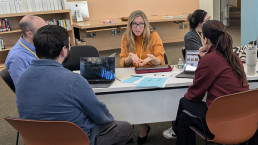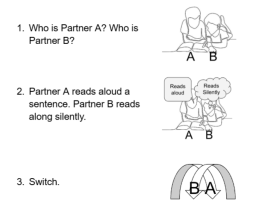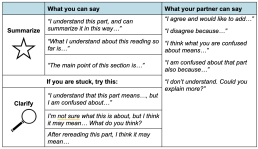
By WriteBoston's Coaching Team
Students and teachers across the country are grappling with “complex texts”–rich, authentic, grade-level reading material that we know all students should be interacting with regularly, for exposure to interesting language, new ideas, and a range of perspectives.
Students struggle because complex texts are, well, complex. Teachers struggle because with a wide range of reading levels and experiences in each classroom, finding ways to engage, excite, and support all students to tackle challenging texts can feel insurmountable.
When we asked, “What are the barriers to your students reading complex texts? What challenges are you seeing in the classroom?” teachers said:
- “It is difficult for students to access grade-level complex texts when their literacy skills are below grade-level.”
- “Background knowledge, lack of motivation, vocabulary, purpose or expectation of reading is not clear, no choice in reading.”
- “[Students] immediately shut down when they encounter “hard” words or texts.”
If you are a teacher, this may sound familiar. Reading complex texts is critical to students’ success with grade-level material, as well as their own reading and identity development, but it’s a challenge – especially in multilingual settings.
Last fall, administrators from Everett High School approached us and asked for a two-part professional development workshop about reading strategies that would support all learners. This school district is a longtime partner of WriteBoston’s – long enough to know that, as we like to say in the office, our work is “not just writing, and not just in Boston.”
The teachers in this school are experienced, passionate, and dedicated to their students, with the shared goal of every child thriving academically and socially. We knew we needed to bring them some new ideas that would fit into their existing work and take it to the next level.
We want to share three of these low-lift strategies that the teachers are finding to be really impactful:
1. Partner Reading
Our first priority was to get all kids reading. We’d heard from the department heads that students were struggling with comprehension and stamina when reading independently, as well as engagement when listening to texts read aloud.
Partner Reading, a strategy adapted from Margarita Calderón and Shawn Slakk’s Teaching Reading to English Learners, Grades 6-12, has students in pairs, taking turns reading out loud to each other and stopping to summarize. The strategy can be modified by using strategic pairing, changing the length of the text chunks, etc.
Partner Reading Directions

After introducing partner reading in our first session, we asked teachers two months later in the second session if they’d found it effective. We heard that students were reading more, understanding more, and were significantly more engaged with texts in class:
“I’ve used the partner reading activity pretty frequently in class and it has really revolutionized the way I approach in-class reading. It’s a great way to engage all students and allow them to be comfortable working and teaching one another.”
Teachers described the “surprising and wonderful” feeling of stepping back and watching all their students engaged in reading to each other, and getting comfortable with the hum of productivity instead of silence.
2. Clarifying Bookmark
In our second session, we expanded on the Partner Reading strategy by offering the Clarifying Bookmark. Our versions and approach are adapted from Aída Walqui and Leo van Lier’s Scaffolding the Academic Success of Adolescent English Language Learners: A Pedagogy of Promise.
As students work through a text, a Clarifying Bookmark prompts them to notice when they aren’t comprehending and offers ways to seek clarification. It can be a literal bookmark, that students keep tucked inside a text, or a handout used alongside a text.
Clarifying Bookmark for Partner Reading

When students read independently, a clarifying bookmark builds their metacognitive awareness by giving them a variety of tools to help them track their comprehension and get unstuck as needed. When students read with a partner, the clarifying bookmark prompts them to summarize and clarify, with sentence starters to support academic conversation.
3. Double-Entry Notes
After our first session, teachers asked for graphic organizers and support with analysis, beyond comprehension. In response, we brought Double-Entry Notes, another strategy adapted from Scaffolding the Academic Success of Adolescent English Language Learners: A Pedagogy of Promise. It’s a note-taking strategy in which students track evidence from the text in one column and corresponding interpretations or reactions in another column.
The format is simple enough that it can be used with almost any task that asks students to make connections, analyze, and form evidence-based opinions about a text. We hope students will become comfortable enough with it that they can take this strategy with them to upper academic levels. While students can use double-entry notes on their own, it is particularly powerful when used in pairs with other students. As students discuss their interpretations of the text with a partner, they can build on one another’s ideas, deepening their understanding and analysis.
During the session, teachers collaborated to adapt double-entry notes in several ways that worked for their students. A common addition was a third column in the middle, such as a “Paraphrase” column to help students get beyond paraphrasing to analysis, or reframing the three columns as “Says/Means/Matters.” We loved hearing teachers and teams workshop the strategy to make it their own!

While complex texts are inherently challenging, these reading strategies give learners tools and foster motivation to persevere and find meaning. We hope you’ll try out some of these reading strategies that support all learners in your own school.
Do you think that your school could benefit from professional development like this? We invite you to learn more about WriteBoston’s work and impact in the Greater Boston area.